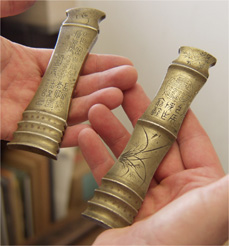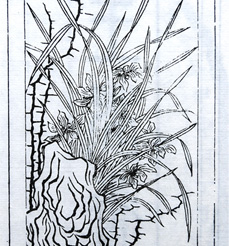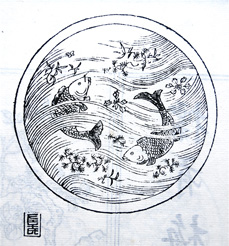Man and nature – pervasive pattern
Nature as the stuff of culture
There exist many books for conventional de-codings of the meanings of natural images in Chinese painting and decoration. Frequently meaning occurs across several registers. An animal or plant may have a symbolic association based on a metaphorical reading of its physical features – as in the association of bamboo with scholars on account of it strength, flexibility and hollowness; or in the identification of the literati as being like the mountain orchid that keeps its perfection in isolated and unsullied valleys. In other cases, the names of natural things were linked to other matters by way of language and particularly by homophones – such as images of 'twin fish' (雙魚 shuang yu) where the pronunciation resembles that for 'double fortune' .
Virtually every commonly occurring object could thus be made meaningful. In consequence, not only is every decorative scheme an assemblage of code, but the actual presence of living plants, etc. can be understood in coded terms. The whole experience of nature is made over into linguistic and philosophical stuff. This has the double effect of providing psychological comfort in the world, but also created a strong (and perhaps limiting) way of seeing the meaning of one's surroundings.
 |  |  |
| Brass paperweights Early 20th century Collection of CHANG Tsong-zung | Orchids (and thorns) Inkcake image Ming period (1368-1644) | 'Twin fish' Inkcake image Ming period (1368-1644) Private collection |